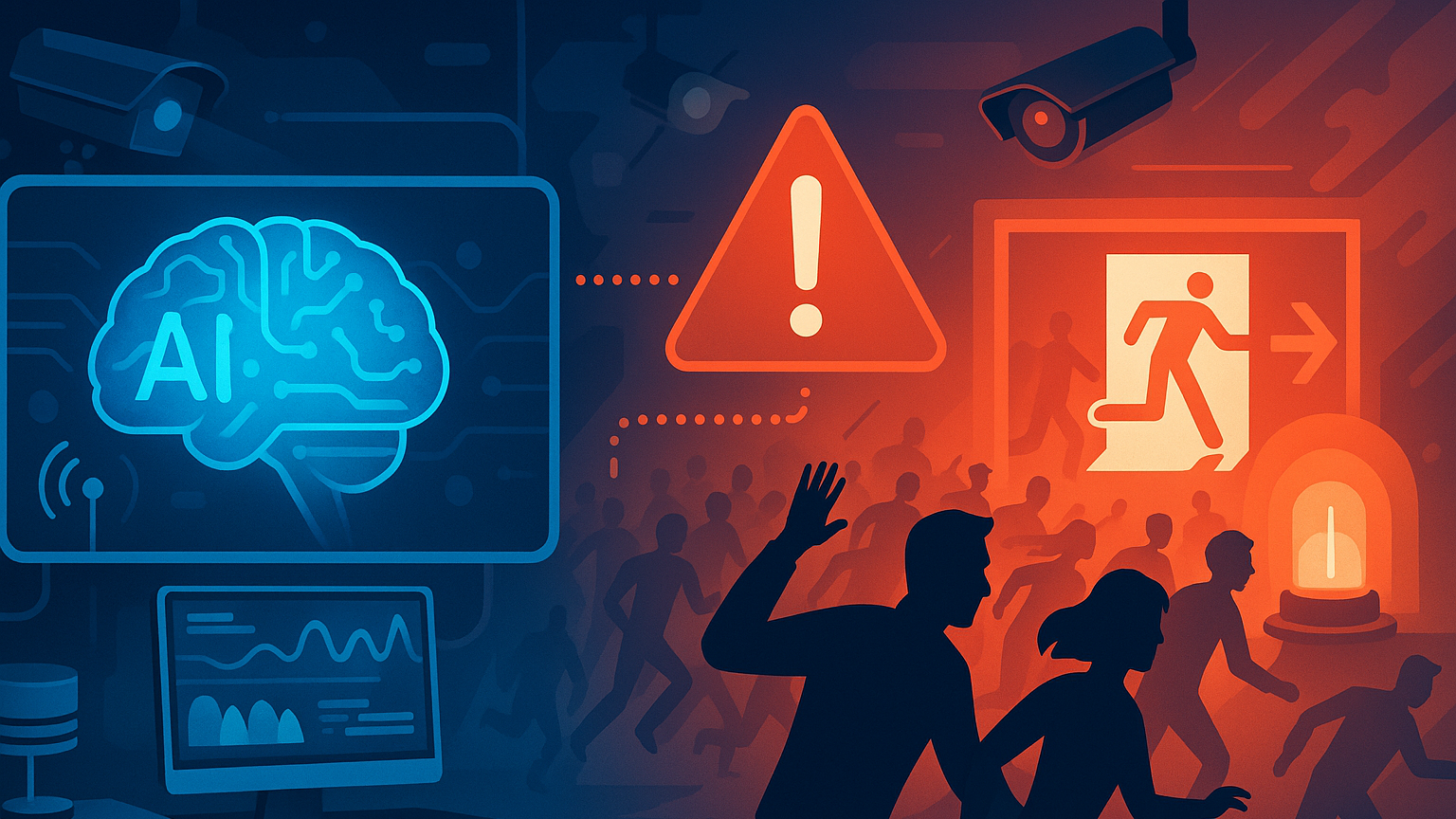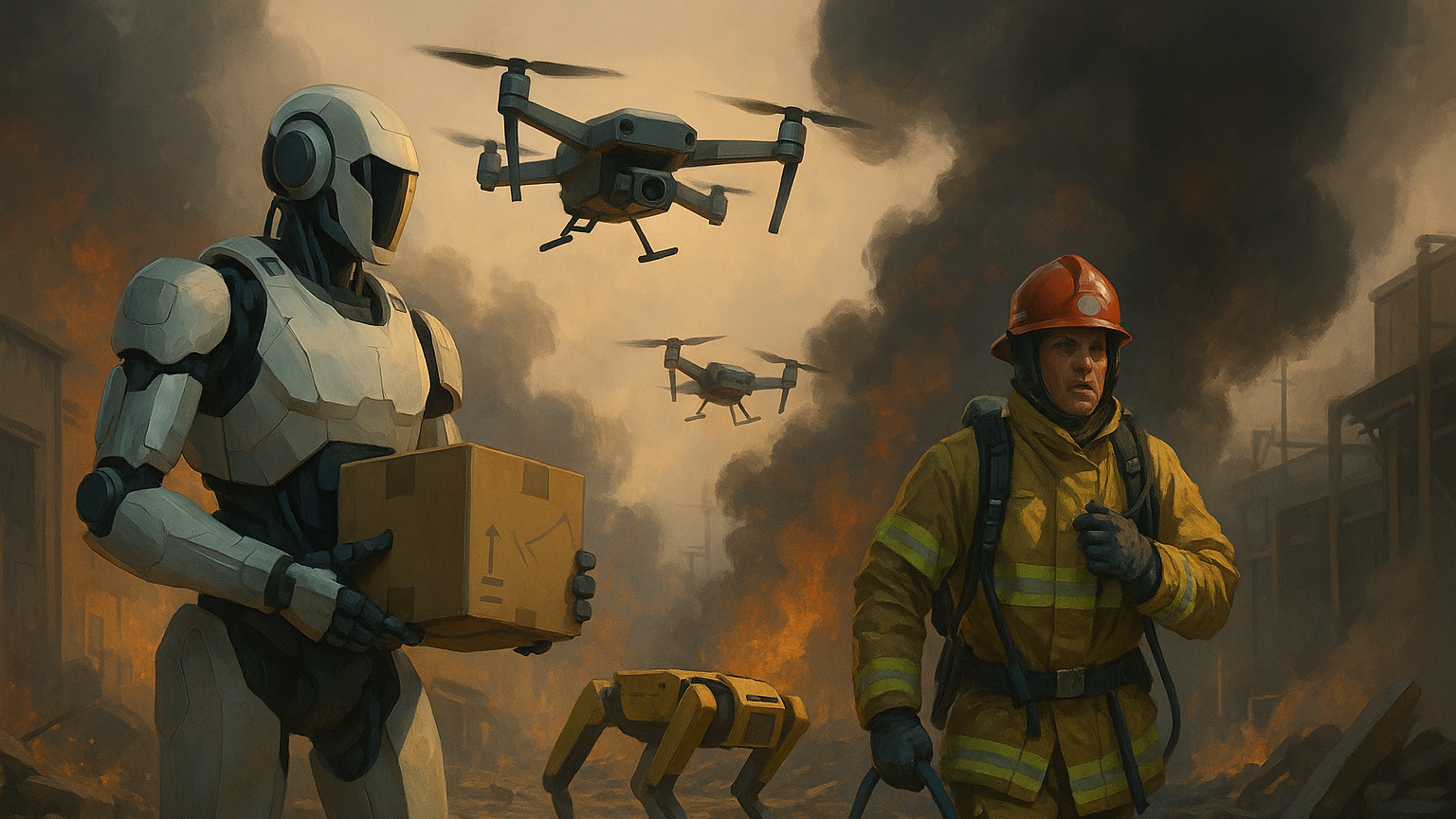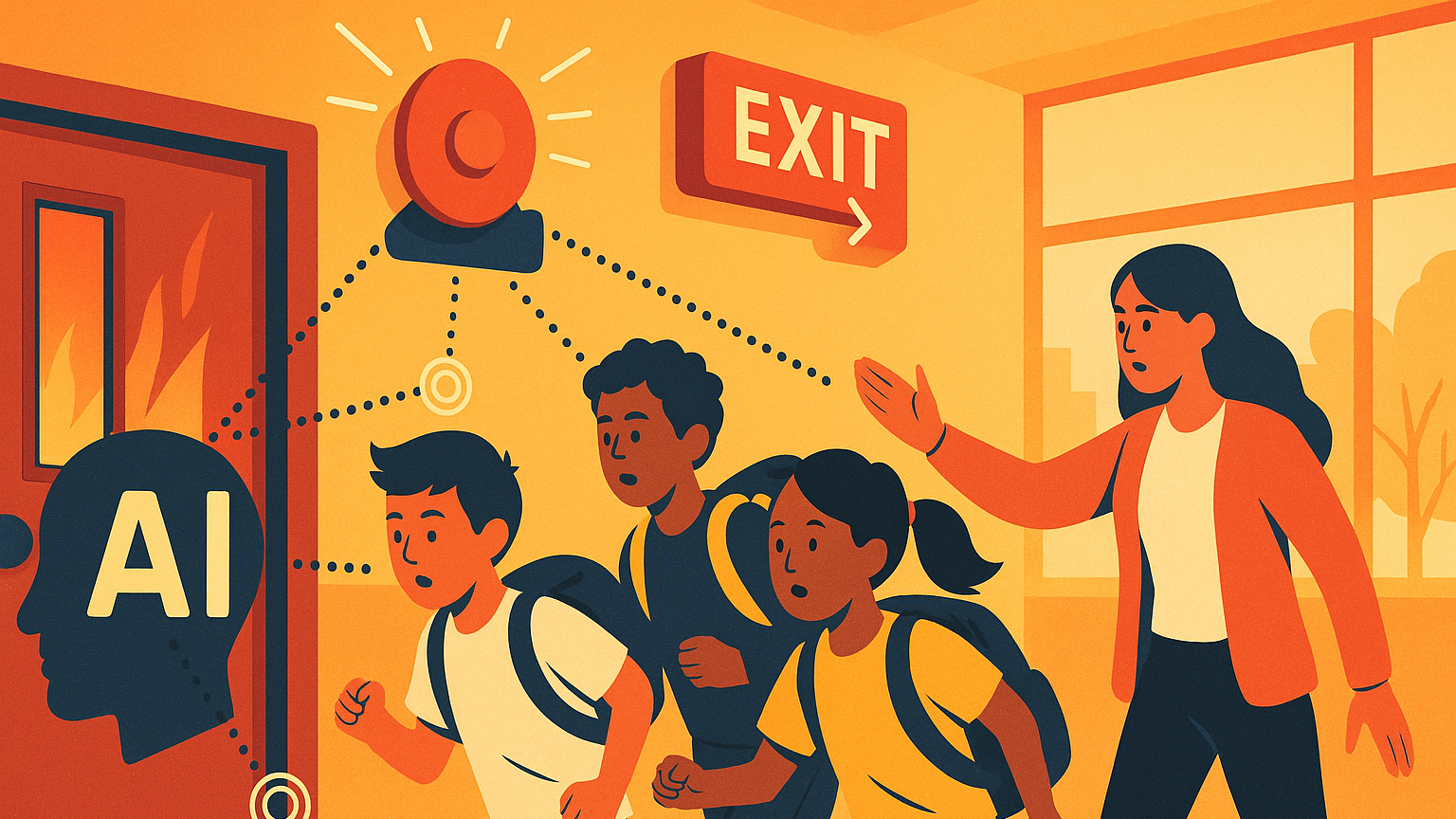
AI Awareness for Organizational Readiness in Employee Emergency Procedures
You’re reading this because you care about keeping people safe and operations resilient, and you want to understand how AI can be a practical part of your organization’s emergency procedures; this article frames AI awareness as a business-capability question rather than a futuristic novelty. You’ll learn how AI augments monitoring, decision-making, communication, and training during crises, and what it requires from leadership, operations, data, and people to be effective. The goal is to make AI approachable and actionable so you can evaluate opportunities, manage risks, and integrate AI into the employee-facing parts of your emergency readiness program without losing focus on human safety and compliance.
Why AI Awareness Matters in Emergency Preparedness
If you’re responsible for preparedness, you need to be aware of AI because it changes both opportunity and obligations in emergencies; awareness helps you identify where AI can speed detection, reduce human error, and scale communications while also introducing new failure modes and legal obligations. Being AI-aware means you know which parts of your procedures may benefit from automation, where human judgment must remain primary, and how to prepare your workforce for systems that will inform or guide them during urgent situations. Without this awareness, you risk implementing tools that don’t integrate with operations, erode trust, or create privacy and safety issues that complicate response.
How AI Is Changing Emergency Procedures
AI is altering emergency procedures by shifting several tasks from slow, manual processes to fast, data-driven ones: early detection through sensor fusion, richer situational pictures from aggregated feeds, automated routing of alerts to the right people, and personalized guidance for employees based on location or role. You’ll see AI used to analyze CCTV or IoT data for anomalies, to triage incoming reports, and to simulate incident scenarios for training. These changes allow you to compress response timelines and adapt communications to diverse employee needs, but they also require you to update SOPs, retrain staff, and establish oversight so AI augments rather than undermines safety and accountability.
Core AI Capabilities Useful in Emergencies
You should understand the core AI capabilities that matter in emergencies so you can match them to the risks you face: computer vision for visual anomalies, time-series models for sensor trends, NLP for intake and alerting, reinforcement learning variants for optimization tasks, and generative tools for rapid content creation and translation. Each capability addresses a specific gap—vision for visual cues, NLP for deciphering ambiguous messages, predictive models for preemptive action—and each comes with trade-offs in accuracy, interpretability, data requirements, and latency. Knowing these capabilities helps you prioritize pilots, budget for data, and define the human-AI handoffs necessary for safe operations.
Real-time Monitoring and Anomaly Detection
You’ll find that real-time monitoring powered by AI can detect subtle deviations that humans might miss, such as temperature drift, unusual crowd movement, or atypical vibrations in equipment, enabling faster initial response. These systems ingest multiple data streams—cameras, badge readers, environmental sensors—and use anomaly detection models to surface events that merit attention, which reduces noise if tuned right or creates false alarms if not. As you plan, consider how alerts will reach employees, who will validate them, and how to escalate events so humans remain in control of consequential decisions while benefiting from AI’s speed and scale.

Predictive Analytics and Risk Forecasting
You can use predictive analytics to anticipate incidents instead of just reacting, modeling probabilities of equipment failure, fire risk under certain conditions, or the likelihood of crowding in confined spaces during specific times. Predictive systems help you allocate resources proactively, schedule maintenance, and pre-position first responders or instructions. However, you must also be ready to interpret probabilistic output appropriately: predictions inform priorities and preparation but rarely deliver certainties, and your emergency procedures should reflect how to act on risk scores without causing unnecessary disruption or panic among employees.
Natural Language Processing for Communication
NLP can transform how you intake reports from employees, parse incoming emergency calls or chat messages, and generate clear, multilingual alerts, which is especially valuable in diverse workforces and distributed operations. You’ll be able to triage reports faster, extract actionable details from free-text inputs, and generate tailored guidance that adapts to location, role, and the nature of the incident. You should plan for fallback channels and human review for ambiguous or high-stakes messages, as NLP models are powerful but can misinterpret context or nuance in ways that matter during emergencies.
Robotics, Drones, and Physical Response
You can augment human responders with robots and drones to perform reconnaissance, deliver supplies, or inspect hazardous areas, reducing exposure and improving situational awareness. These systems are most effective when integrated into a larger response workflow—AI helps plan flight paths, interpret sensor data, and coordinate multiple assets—but they also require clear policies about where and when they operate, who controls them, and how their findings are validated before acting. As you integrate robotics, consider physical safety, airspace and regulatory rules, and the human training needed to operate and trust these tools.

Decision Support and Augmented Intelligence
AI-driven decision-support tools synthesize data into recommendations that help you triage incidents, allocate teams, and sequence recovery steps; they’re best used as augmented intelligence that enhances human judgment rather than replaces it. When you deploy decision support, ensure it presents rationale, confidence levels, and alternative options so responders can understand why a recommendation was made and whether to follow it. This transparency supports accountability and builds user trust, allowing your emergency teams to act decisively while retaining the final authority and ethical responsibility.
Simulation, Virtual Reality, and Training
Simulation and VR powered by AI lets you create immersive, repeatable training scenarios that reflect realistic variability and complexity without risk to people or assets, helping you prepare employees for stress, ambiguity, and multi-step responses. These systems can adapt scenarios in real time to test decision-making under pressure, expose trainees to uncommon but critical events, and record performance metrics for continuous improvement. When you design these experiences, align them with your SOPs and after-action review processes so that lessons from simulated exercises translate into procedural updates and behavioral changes.
Sector-specific Impacts: Education and Training Context
In education and training settings, you’ll find AI improving both readiness and pedagogy, tailoring drills and instructional content to learner needs, providing on-demand virtual coaching, and scaling standardized training across campuses or franchises. Student safety benefits from faster incident detection, automated roll calls, and tailored shelter-in-place guidance, while trainers can use AI analytics to identify common gaps and personalize follow-up. You should balance technological capabilities with privacy, consent, and the developmental needs of learners; policies must address data minimization, parental notification where appropriate, and clear communication about how AI will be used in drills and real incidents.

Mapping AI to Your Existing Emergency Procedures
When you map AI to existing procedures, you’ll identify where AI can replace, augment, or complicate steps and then prioritize integrations that preserve human oversight and legal compliance. Start by documenting current workflows, decision points, and information flows, then overlay AI capabilities to see where speed or scale would create the greatest value. This mapping helps avoid tech-first deployments that don’t consider operations; it also highlights necessary changes to roles, escalation protocols, and communications, ensuring AI becomes an enabling part of a coherent response system rather than an isolated tool.

Conducting an AI Readiness Assessment
You should run an AI readiness assessment to determine data availability, technical infrastructure, governance maturity, stakeholder appetite, and training needs before investing in tools. This assessment identifies gaps like inconsistent sensor coverage, poor data labeling, unclear ownership of incident response, or insufficient legal review, and it helps you sequence quick wins versus longer-term programs. Use the assessment to build a prioritized roadmap with measurable milestones and to secure budget and executive support based on realistic return on safety and resilience rather than hype.
Building Stakeholder Buy-in and Governance
To integrate AI responsibly, you’ll need governance structures that include legal, IT, HR, operations, and frontline employee representation so that decisions reflect operational realities and ethical constraints. Stakeholder buy-in is achieved by demonstrating how AI reduces risk, improves employee safety, and supports compliance, while also acknowledging limitations and outlining guardrails like human-in-the-loop protocols and audit trails. Clear governance helps prevent fragmented deployments, ensures accountability for AI decisions during incidents, and creates channels for reporting issues, updating models, and communicating changes to the workforce.
Data Strategy for Emergency AI Systems
Your data strategy should address collection, quality, labeling, storage, and retention with emergency-focused prioritization: high-quality, time-stamped data with provenance is essential for reliable anomaly detection and trustworthy decision support. You’ll need policies for sensor calibration, data normalization across sources, and mechanisms to label events and outcomes for supervised learning and post-incident analysis. Plan for a data lifecycle that balances rapid access during crises with secure long-term retention for audits and continuous model training while minimizing unnecessary personal data collection to reduce privacy risk.
Privacy, Security, and Compliance Considerations
You’ll be accountable for protecting the personal and sensitive information AI systems use, and security breaches or privacy violations can be as disruptive as the original incident, so build privacy-by-design and security-by-design into AI projects. That means applying access controls, encryption, anonymization where possible, and thorough vendor assessments to confirm compliance with data protection laws relevant to your jurisdiction and sector. Additionally, prepare for regulatory scrutiny by documenting decision logic, maintaining audit logs, and providing mechanisms for employees to challenge or correct data-driven decisions affecting them.
Human-Centered Design and Ethical Use
When you design AI tools for emergencies, keep humans at the center: design interfaces that are clear under stress, provide explanations for recommended actions, and account for diverse abilities, languages, and accessibility needs among employees. Ethical use means you avoid models that disproportionately disadvantage or surveil specific groups, you provide transparency about AI roles, and you establish avenues for feedback and redress. Prioritizing dignity, fairness, and clarity in design builds trust and ensures your emergency procedures are effective across the full range of people you’re trying to protect.

Training Employees: Curriculum and Competency
You need a structured training curriculum so employees understand what AI will and will not do during emergencies, how to interpret AI-generated alerts, and how to perform their responsibilities when systems are degraded or offline. The curriculum should include awareness sessions for all staff, role-specific training for responders and managers, and technical training for operations and IT teams who support the systems. Emphasize practical exercises, decision-making under uncertainty, and the social dynamics of following AI guidance; building competency prevents confusion and ensures employees view AI as a reliable teammate rather than an opaque authority.
Role-specific Training and Responsibilities
Different roles require tailored training: frontline staff need clear evacuation or shelter instructions and an understanding of automated alerts, managers need guidance on validating AI recommendations and communicating status, and technical teams need runbooks for system failures and model retraining. You’ll ensure training reflects the granularity of responsibilities so each person knows exactly what to do and what not to do when AI systems produce guidance. Clear role delineation reduces duplicated effort and prevents dangerous assumptions that “the system will handle it,” reinforcing human accountability throughout the emergency lifecycle.
Tabletop Exercises and Live Simulations with AI
Tabletop exercises and live simulations that include AI systems help you validate procedures, test integration points, and surface usability or trust issues before a real incident occurs, while also offering a low-risk environment to observe human-AI interactions. Run scenarios where AI behaves as expected and where it fails in plausible ways, and assess how teams respond to both, capturing lessons for both model tuning and procedural adjustments. These exercises reveal whether your communication channels, fallback procedures, and decision hierarchies work under pressure and inform updates to training and SOPs.
Operational Integration and Standard Operating Procedures
You’ll need to update SOPs to codify when AI-generated alerts are acted upon, how to escalate ambiguous situations, who is authorized to override automated recommendations, and how to document decisions made with AI support. Integration also entails technical interoperability between AI systems and existing tools like mass notification platforms, access control systems, and incident management software so that alerts flow reliably and actions can be coordinated. Well-crafted SOPs preserve flexibility while ensuring safety-critical controls remain human-centered, auditable, and aligned with legal responsibilities.
Technology Selection and Vendor Management
Selecting technology and vendors requires you to evaluate model performance, interpretability, data handling practices, update cycles, support SLAs, and the vendor’s approach to security and incident response. Prefer vendors who can demonstrate domain-specific experience, offer transparent model behavior, and support on-premises or hybrid deployments when regulatory or privacy needs demand it. Your vendor agreements should cover responsibilities in incident scenarios, data ownership, model retraining expectations, and termination provisions so you maintain operational continuity and control if relationships change.
Testing, Validation, and Ongoing Assurance
You cannot treat AI models as set-and-forget; you’ll need ongoing validation and assurance processes to monitor drift, detect performance degradation, and confirm that models remain reliable as conditions evolve. Establish testing pipelines that use new incident data, synthetic stress tests, and adversarial scenarios, and keep records of performance metrics tied to operational outcomes. Regular assurance cycles help you catch vulnerabilities, reduce false positives and negatives, and justify continued use by showing measurable improvements in detection time, accuracy of alerts, or decision support relevance.
Measuring Success: KPIs and Metrics for Readiness
Define KPIs that reflect both safety outcomes and system performance—metrics like time-to-detection, time-to-acknowledgment by responders, false alert rate, employee training completion and proficiency scores, and post-incident recovery timelines give you a balanced view of readiness. You’ll also want to track qualitative indicators such as employee trust and perceived usefulness of AI tools through surveys and after-action interviews. These metrics guide investments and prioritization, helping you shift resources to areas where AI demonstrably improves response or where additional training or governance is needed.
Common Pitfalls and How to Avoid Them
You should watch for common pitfalls: rushing deployment without operational integration, collecting sensitive data without a clear purpose, over-relying on AI recommendations, and failing to involve end users early in design. Avoid these by starting with small, well-scoped pilots that solve a specific problem, involving frontline staff in design and testing, documenting data flows and governance, and building human-in-the-loop controls that keep people central to critical decisions. These practices reduce the chance of costly missteps and help you build solutions that are actually useful in the stressful, chaotic context of real emergencies.
Roadmap for Implementation: Pilot to Scale
A pragmatic roadmap moves from discovery and a small pilot to expanded deployment and continuous scaling: begin with a clear problem statement, secure a pilot environment with representative data, conduct iterative testing and UX validation, and then expand with phased rollouts tied to training and governance. Each phase should have go/no-go criteria such as accuracy thresholds, user acceptance levels, and documented SOP updates. Scaling should be accompanied by investments in data pipelines, security, and model governance so that performance and trust are preserved as the system covers more locations and more complex incident types.
Case Studies and Use Cases Across Industries
You’ll find relevant case studies across sectors: universities using AI to automate roll call and shelter-in-place alerts, hospitals using predictive models to anticipate patient surges and direct staff safely, manufacturing sites monitoring equipment for early failure signs, and transit systems using AI to detect crowding or infrastructure anomalies. Each use case illustrates how AI can accelerate detection and coordination while exposing the need for robust onboarding, clear fallback protocols, and careful attention to privacy, as sector-specific regulatory and human factors shape what’s feasible and acceptable in practice.
Future Trends to Watch in AI and Emergency Preparedness
Looking forward, you’ll want to watch trends like edge AI for lower-latency detection, federated learning to enable cross-organization model improvement without sharing raw data, the integration of augmented reality for responder guidance, and enhanced multisensor fusion combining audio, visual, and environmental inputs. These advances will expand capabilities but also demand new governance and interoperability standards; being aware of these trajectories lets you plan for incremental upgrades and ensures your investments remain relevant as technology and regulations evolve.
Conclusion: Taking Practical Steps Today
You can begin improving organizational readiness with AI today by conducting a targeted readiness assessment, launching a tightly-scoped pilot, and committing to governance, training, and continuous testing; by keeping humans in control and prioritizing safety, you’ll unlock AI’s ability to reduce detection time, improve communications, and strengthen training. Start small, measure rigorously, involve frontline staff early, and treat AI as a tool embedded in broader emergency management practices rather than a standalone fix. With thoughtful design and disciplined operations, AI becomes a multiplier for preparedness that complements the judgment, compassion, and expertise your teams bring during critical moments.
Please clap this article if you found it useful, leave a comment with your thoughts or questions, and subscribe to my Medium newsletter for updates on AI, training, and organizational readiness.
